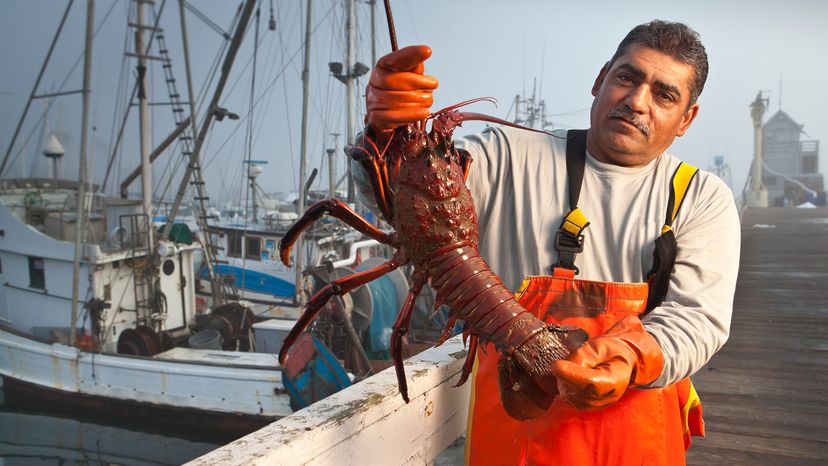The people who caught these giant crustaceans have the receipts to confirm their incredible feats.
Guinness World Records' Largest Lobster (44.4 Pounds, 20 kg)
Caught off the coast of Nova Scotia, Canada, in 1977, there's no question about the size of this lobster. It currently holds the Guinness World Record for the largest marine crustacean.
Claws to tail, the creature boasted 3.5 feet (1.1 meters) of total length and was estimated to be over 100 years old. Guinness claims that the lobster was sold to a New York restaurateur after being caught.
Mike (42.7 Pounds, 19.4 kg) and Ike (38 Pounds, 17.2 kg)
This beastly pair of American lobsters were said to have been caught somewhere around the Virginia capes in 1934. Since their death, the bodies have been preserved and put on display at the Boston Museum of Science in Massachusetts.
Rocky (27 Pounds, 12.2 kg)
Holding the official title for Maine's largest lobster, Rocky was found in a shrimping net in 2012, taken in for measurements, weighed and subsequently released. (There are now laws in place preventing fishermen from keeping lobsters above a certain size in order to help sustain the population.)
At the time, Rocky was 40 inches (102 cm) long and had claws powerful enough to break a human arm. He may be even bigger today.
Louie (22 Pounds, 10 kg)
Louie the lobster has the distinction of not being caught, but allowed to grow to a massive size in captivity.
For 20 years, Louie was fed and pampered at a New York restaurant called Peter's Clam Bar. A customer reportedly offered the owner $1,000 to take Louie home for dinner, but the owner instead decided to release the giant lobster back to the wild in 2017.
At the time, Louie was estimated to be over 130 years old.
George (20 Pounds, 9.1 kg)
First caught off the coast of Newfoundland, Canada, in 2009, big George was estimated to be at least 140 years old. This potentially makes him the oldest lobster specimen ever seen.
George eventually made his way to a seafood restaurant in New York, where he lived for about 10 days. Eventually, a restaurant guest spotted George and recognized him for being a rare find.
The guest petitioned PETA to negotiate for the elder lobster to be released unharmed, and the restaurant owners subsequently relinquished to representatives of PETA. They took George and found him a spot off the coast of Maine to live out the rest of his life in his retirement.
